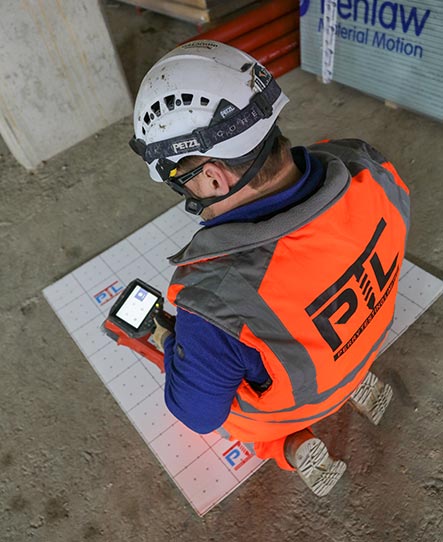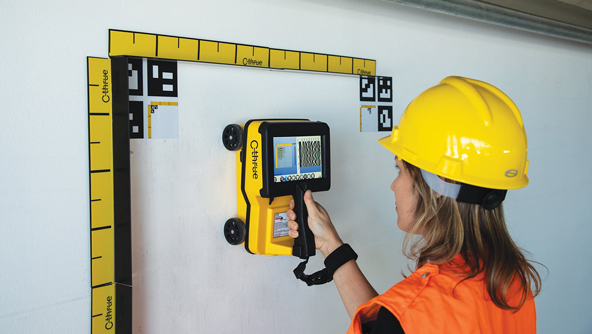In-Depth Insights into Concrete Scanning Procedures
In-Depth Insights into Concrete Scanning Procedures
Blog Article
Reveal the Transformative Power of Concrete Scanning in Taking Full Advantage Of Efficiency and Safety
Concrete scanning has actually become an essential device in the building sector, offering unrivaled advantages in enhancing job effectiveness and making sure security requirements. By using sophisticated technology, concrete scanning permits experts to see beyond the surface area, uncovering concealed complexities that can affect the structural stability of a structure. The transformative power of concrete scanning lies in its ability to provide real-time information and thorough insights, revolutionizing exactly how tasks are planned and carried out. As we dig right into the intricacies of this ingenious method, a globe of possibilities opens up, showcasing a new age of building and construction practices that prioritize accuracy and safety and security.
Relevance of Concrete Scanning
Making certain the architectural stability and security of building projects begins with the important step of carrying out detailed concrete scanning. Concrete scanning is a non-destructive approach used to detect and map subsurface elements within concrete frameworks. This procedure is crucial in recognizing prospective dangers, such as rebar, post-tension cords, and channels, that may be concealed within the concrete. By using advanced technologies like ground-penetrating radar (GPR) and electro-magnetic induction, building and construction groups can precisely locate these elements without triggering any damage to the framework.
Furthermore, concrete scanning aids in optimizing project timelines and budget plan by preventing unexpected expenses and delays that may occur due to unpredicted blockages within the concrete. Ultimately, investing in detailed concrete scanning is an aggressive strategy that boosts both performance and safety and security in building and construction projects.
How Concrete Scanning Works
Concrete scanning runs as a vital device in building tasks by using advanced technologies to detect and map subsurface elements without triggering structural damages. Ground Permeating Radar (GPR) and Electromagnetic Induction (EMI) are 2 key methods utilized in concrete scanning.
Throughout the scanning process, the data gathered is examined in real-time, enabling immediate recognition of possible risks or challenges underneath the surface. By employing these innovative innovations, concrete scanning significantly decreases the risk of pricey damages and injuries on building websites.
Advantages of Concrete Scanning
One of the primary benefits of concrete scanning is the ability to discover and find embedded objects such as rebar, post-tension cords, and avenues accurately. Concrete scanning assists in preparation and creating extra efficiently, as it gives specific information regarding the place and depth of structural elements.

Situation Researches: Concrete Scanning Success

In one more case, a construction business used 3D concrete scanning to examine the condition old concrete frameworks in a historic building. The thorough scans supplied important insights right into the extent of wear and tear and helped prioritize maintenance initiatives efficiently. By proactively addressing areas of problem identified with scanning, the firm had the ability to extend the life expectancy of the framework and ensure passenger safety.
These study underscore the transformative power of concrete scanning in improving performance, accuracy, and safety and security in construction tasks.
Implementing Concrete Scanning in Projects
Executing innovative scanning technologies throughout building projects has ended up being increasingly basics essential for improving accuracy and security. By integrating concrete scanning right into task preparation and execution, building groups can determine possible risks, such as rebar or post-tension cords, hidden within concrete frameworks. This positive technique lessens the threat of mishaps, hold-ups, and expensive rework, eventually resulting in much more efficient project timelines and budgets.
To implement concrete scanning effectively, task supervisors need to collaborate closely with experienced scanning professionals to identify the most suitable scanning strategies for the details job demands. Involving scanning experts from the beginning of a task makes it possible for the team to develop extensive scanning plans that attend to vital locations of issue and guarantee comprehensive information collection.
Furthermore, integrating concrete scanning right into routine task process can simplify decision-making procedures, as real-time check data supplies immediate insights into the condition of concrete frameworks - Concrete Scanning. This data-driven approach assists in educated analytical and enables teams to make changes quickly, cultivating a culture of effectiveness and safety throughout the job lifecycle

Final Thought
Finally, concrete scanning plays an important function in boosting efficiency and security in building and construction tasks. By utilizing sophisticated technology to map and detect out underlying structures within concrete, this process assists to protect against costly errors, make sure architectural honesty, and reduce dangers on website. With the ability to discover surprise elements and offer exact information, concrete scanning shows to be a beneficial tool for optimizing job outcomes and making the most of total success.
Concrete scanning is a non-destructive technique utilized to identify and map subsurface components within concrete structures. Furthermore, concrete scanning helps in optimizing task timelines and budget plan by preventing unexpected costs and hold-ups that might arise due to unpredicted blockages within the concrete. One remarkable instance research entails a large improvement task where concrete scanning played an essential role in guaranteeing job success.In an additional instance, a building and construction company made use of 3D concrete scanning to analyze the problem of maturing concrete frameworks in a historical structure. By incorporating concrete scanning into job preparation and implementation, building and construction groups can identify possible hazards, such as rebar or post-tension cable televisions, hidden within concrete frameworks.
Report this page